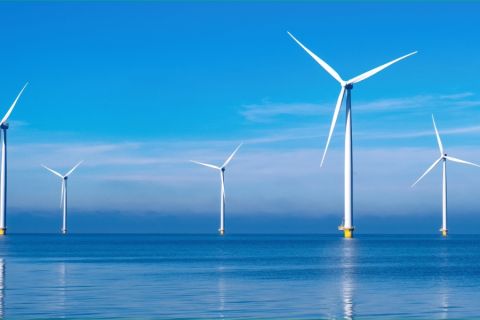South America stands as one of the world’s most prolific oil provinces. From the heavy oil fields in Venezuela to the presalt province offshore Brazil, the continent is brimming with promise.
Brazil gobbles most of the headlines these days, with almost daily releases from Petrobras noting discoveries, field extensions, and initial production. At the Jupiter field, preliminary drilling results of 3BRSA-967A-RJS (3-RJS-683A) confirmed the presence of natural gas and condensate. The well was drilled 7.5 km (4.6 miles) from the discovery well and is located in Block BM-S-24 at a water depth of 2,161 m (7,091 ft). So far the well has detected an oil column of 176 m (577 ft) in good-quality reservoir rock, according to Petrobras.
In the Sergipe-Alagoas basin, the company discovered a new accumulation of light hydrocarbons in ultra-deep waters in concession area BM-SEAL-11. The well is located in 105 km (64 miles) from the municipality of Aracaju, off the coast of Sergipe State, at a water depth of 2,328 m (7,638 ft). This discovery was Petrobras’ fifth in 2012.
The company did not take much time off celebrating the new year. On Jan. 2 Petrobras announced that its third Carcar? probe found a massive 471-m (1,545-ft) oil column containing 31°API oil free of contaminants as well as 402 m (1,320 ft) in carbonate reservoirs with excellent porosity and permeability. Tests from the well indicate that the oil flow in the reservoir has more potential yet, the company said.
The presalt Sapinho? field in the Santos basin was brought onto production Jan. 5, about a week ahead of schedule. The FPSO is anchored in 2,140 m (7,021 ft) of water and can process 120,000 b/d of oil and 5 MMcf/d.
Most recently, Petrobras drilled its fifth well in the Tupi South area of the Santos basin following the execution of the transfer of rights agreement. The well confirmed the presence of good-quality reservoirs in carbonate rocks below the salt. Once the well is complete, formation testing is scheduled.

Petrobras’ Sul de Tupi well is located south of the Lula field at a water depth of 2,188 m (7,178 ft) and 302 km (186 miles) off the coast of Rio de Janeiro state. (Map courtesy of Petrobras)
Suriname
Recently, some new names have joined the ranks of established petroleum producing countries in South America. Among these is Suriname, one of the many countries of interest along the Atlantic Transform margin. Just as some companies are looking offshore West Africa for pre-salt analogs to Brazil, many West African operators are chasing analogs west to South America. In December 2011, Kosmos Energy announced it had executed two production-sharing contracts (PSC) with the government of Suriname for offshore blocks 42 and 45. Soon after, in June 2012, Chevron announced that it would join forces with Kosmos to explore off the small South America country. Under the agreement, Kosmos has a 50% working interest and remains operator of both blocks until the end of the exploration phase. Chevron has assumed the remaining 50% working interest and will be the operator following any commercial discoveries.
In October 2012 Apache Corp. joined the ranks by signing a PSC with Staatsolie Maatschappij Suriname NV, the state oil company, for Block 53, located about 130 km (81 miles) off the northwest coast of Paramaibo, the company said. Apache has agreed to a work program that includes a 3-D seismic program expected to begin this year and two exploration wells. Apache has a 100% participating interest in the block.
“Block 53 is on trend with the large Zaedyus discovery offshore French Guinea – an indication that the Equatorial Margin play fairway may extend to the west side of the Atlantic Ocean,” said Tim Chisholm, director of Apache’s New Ventures activities in the Americas, in a statement. “Apache was selected after a competitive bid round involving companies with proven international exploration track records.”
Tom Fauria, vice president, Exploration – South America for Kosmos, said the area fits that company’s exploration plans. “Our exploration strategy is very focused, both geologically and geographically,” he said. “In addition, we are very disciplined thematically, targeting primarily frontier and emerging areas of the Atlantic Transform margin, where there is evidence of a working petroleum system although no significant play-opening discoveries have been made. The deepwater area offshore Suriname fits this strategic focus.”

In this map showing drought conditions as of Aug. 21, 2012, it is easy to identify the many areas across the continental US, covering several unconventional plays, that have experienced drought conditions ranging from abnormally dry to exceptional. (Image courtesy of the National Drought Mitigation Center at the University of Nebraska-Lincoln)
Kosmos was operator of the Jubilee discovery offshore Ghana, so it has an extensive working knowledge of this geology on the other side of the Atlantic Ocean, Fauria added.
Target reservoirs are Upper and Middle Cretaceous-age slope turbidite sands with good lateral continuity. Source rocks are similar to those of the giant fields offshore West Africa.
Despite these desirable qualities, the area has not yet yielded up much of its bounty. Fauria said that the majority of the offshore drilling to date has been in shallower water targeting Miocene- or Tertiary-age reservoirs.
The company has recently completed a “very sizable” 3-D seismic program, and Fauria said that processing and interpretation of the data are likely to take the better part of 2013. He expects the first drilling to take place the following year.
“We are enthusiastic and optimistic about the potential for discovering significant commercial volumes of hydrocarbons offshore Suriname,” Fauria said. “Given the size of our Suriname exploration portfolio, a discovery could lead to several additional exploratory wells targeting follow-up opportunities.”
Uruguay
Uruguay is not a complete stranger to oil and gas, but its emergence as a major player has yet to happen. This is not for lack of trying on the part of the government.
The country held its second licensing round in 2012 after a lukewarm reception to its first round. While several companies did bid in that first round, there was not much movement in terms of new exploration programs, said Alex Vartan, vice president, South America Multi-client for PGS. “The government, in conjunction with ANCAP [the state oil company of Uruguay], chose to change the terms in Uruguay to make it much more attractive, focusing on reducing the royalties in the second round,” Vartan said. “And they removed the signature bonuses to make it an attractive playing field for new entrant companies.”
These improvements seem to have helped – the bidding round netted US $1.65 billion in bids, and Vartan said several majors bid in the second round. Given the renewed interest in the region, PGS decided to move ahead with a very large multiclient survey to help fulfill the exploration programs that were submitted for bid.
The company started acquisition of 15,550 sq km (6,000 sq miles) in December 2012 using its Geostreamer technology. It is one of the largest seismic surveys ever shot in the region. PGS will provide fast-track processing for operators needing early access to the images and will offer survey results in conjunction with its existing 2-D data in the neighboring Pelotas basin.
Vartan said that Uruguay is of interest geologically as a conjugate margin play, again playing to the strengths of companies like Tullow, which have had similar success in West Africa. The area also is of interest to companies that would like to explore offshore Brazil but are stymied by the lack of licensing rounds.
It also is a good learning experience for ANCAP personnel, who have mostly been involved in refining and distribution in the past, Vartan said. “They are a very young exploration company, so the exploration group is very small,” he said. “They are set to grow rapidly over the next few years. I think there will be an education process to go through, but they are very cooperative and easy to work with.”
The government of Uruguay also is unused to major oil and gas campaigns, and Vartan said that the industry is working with the government to get it up to speed. He added that the threat of nationalization is not a major concern.
While PGS’ activity in Uruguay is nowhere near as extensive as its activity in neighboring Brazil, Vartan thinks Uruguay has a bright future. “It’s a frontier basin,” he said. “It has tremendous potential that is as yet unknown, untapped; no wells have been sunk to date. But I think it has the potential to be a great area for PGS.”
Falkland Islands
It is possible that some areas of South America make news for all of the wrong reasons, and this could be the case with the Falkland Islands. Even though the British pushed the Argentinians out after their 1982 invasion of the islands, Argentinians still maintain that the islands belong to them, while the British prefer to let the islanders govern themselves.
In the midst of this uncertainty, several oil and gas companies are attempting to gauge the prospectivity of the waters surrounding the islands. Rockhopper Exploration Plc was founded in 2004 with a strategy to explore for oil in the north part of the region. It acquired four production licenses, PL023, PL024, PL032, and PL033, covering about 3,800 sq km (1,470 sq miles). It also has smaller interests in three blocks operated by Desire Petroleum Plc. In addition, the company has a significant interest in license PL004b, which has the extension to its Sea Lion field as well as the Beverley, Casper, and Casper South discoveries.
Over the years Rockhopper carried out 2-D, 3-D, and controlled-source electromagnetic surveys, and in February 2010, it brought the Ocean Guardian drilling rig on site to carry out a multiwell drilling program. The company reported the first oil discovery in May 2010 on the Sea Lion prospect and subsequently was the first company to flow oil to surface in Falkland Islands waters. The first campaign concluded in January 2012 with three oil discoveries, three gas discoveries, multiple successful Sea Lion appraisal wells, and a successful appraisal of Casper.
Recently, Rockhopper farmed out 60% of its interests to Premier Oil Plc to fund further development. “The Sea Lion field is now fully financed,” said Pierre Jungels, chairman, in Rockhopper’s latest investor report. “This means that for its 2C case, Rockhopper has approximately 142 MMbbl of financed oil that, from late 2017, should begin generating cash flow with an estimated value to Rockhopper in excess of $2 billion at a 10% discount factor.”
Recommended Reading
Guyana’s Stabroek Boosts Production as Chevron Watches, Waits
2024-04-25 - Chevron Corp.’s planned $53 billion acquisition of Hess Corp. could potentially close in 2025, but in the meantime, the California-based energy giant is in a “read only” mode as an Exxon Mobil-led consortium boosts Guyana production.
US Interior Department Releases Offshore Wind Lease Schedule
2024-04-24 - The U.S. Interior Department’s schedule includes up to a dozen lease sales through 2028 for offshore wind, compared to three for oil and gas lease sales through 2029.
Utah’s Ute Tribe Demands FTC Allow XCL-Altamont Deal
2024-04-24 - More than 90% of the Utah Ute tribe’s income is from energy development on its 4.5-million-acre reservation and the tribe says XCL Resources’ bid to buy Altamont Energy shouldn’t be blocked.
Mexico Presidential Hopeful Sheinbaum Emphasizes Energy Sovereignty
2024-04-24 - Claudia Sheinbaum, vying to becoming Mexico’s next president this summer, says she isn’t in favor of an absolute privatization of the energy sector but she isn’t against private investments either.
Venture Global Gets FERC Nod to Process Gas for LNG
2024-04-23 - Venture Global’s massive export terminal will change natural gas flows across the Gulf of Mexico but its Plaquemines LNG export terminal may still be years away from delivering LNG to long-term customers.





